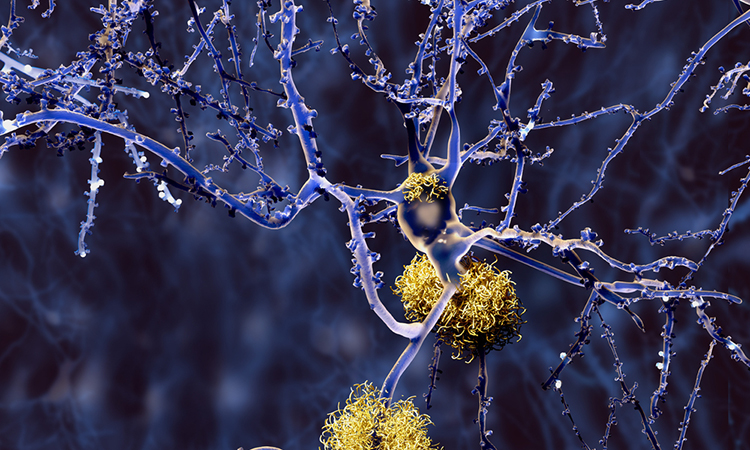Novel vaccine key to reduce Alzheimer’s impact
Posted: 2 August 2023 | Taylor Mixides (Drug Target Review) | No comments yet
Promising preliminary research reveals a novel vaccine targeting an Alzheimer’s disease-related protein successfully eliminated toxic cells in mice afflicted with the condition.


Research found here reveals a novel vaccine targeting an Alzheimer’s disease-related protein successfully eliminated toxic cells in mice afflicted with the condition. Following vaccination, the mice exhibited reduced amyloid plaques and decreased brain tissue inflammation, accompanied by enhanced behavioural and cognitive improvements.
A vaccine aimed at inflamed brain cells associated with Alzheimer’s disease may hold the potential to prevent or modify the course of this debilitating condition, as indicated by early findings presented at the American Heart Association’s Basic Cardiovascular Sciences Scientific Sessions 2023 in Boston, from July 31 to August 3, 2023. The conference showcases the latest advancements and discoveries in cardiovascular science.
Previously, researchers at Juntendo University Graduate School of Medicine in Tokyo, Japan developed a senolytic vaccine targeting senescent cells expressing senescence-associated glycoprotein (SAGP), which demonstrated significant benefits in various age-related diseases, such as atherosclerosis and Type 2 diabetes, in mice. Another study found heightened SAGP expression in glial cells among individuals with Alzheimer’s disease. Building on these insights, the scientists examined the efficacy of this vaccine in targeting SAGP-overexpressed cells to treat Alzheimer’s disease in mice.
“With Alzheimer’s disease affecting 50% to 70% of dementia patients worldwide, our mouse study of this innovative vaccine offers a potential avenue to prevent or modify the disease. The next step will be replicating similar outcomes in humans,” said lead study author Chieh-Lun Hsiao, Ph.D., a post-doctoral fellow in the department of cardiovascular biology and medicine at Juntendo University Graduate School of Medicine in Tokyo. “If the vaccine proves successful in humans, it could significantly delay disease progression or even prevent its development.”
During the study, the research team created an Alzheimer’s disease mouse model simulating human brain conditions with amyloid-beta-induced Alzheimer’s disease pathology. The mice received either the SAGP vaccine or a control vaccine at two and four months of age. Notably, mice who received the SAGP vaccine displayed increased anxiety, indicating heightened awareness of their surroundings – a potential sign of disease mitigation. Furthermore, several inflammatory biomarkers associated with Alzheimer’s disease were reduced.
The SAGP vaccine significantly decreased amyloid deposits in the cerebral cortex region of the brain, responsible for language processing, attention, and problem-solving. Astrocyte cells, the most abundant type of glial cell in the brain and a specific inflammatory molecule, exhibited reduced size in mice receiving the SAGP vaccine. A decline in other inflammatory biomarkers also suggested an improvement in brain inflammation in response to the vaccine. A behaviour test using a maze-type device on the mice at six months old demonstrated that those vaccinated with SAGP responded better to their environment compared to those who received the placebo vaccine.
The SAGP-vaccinated mice exhibited behaviour similar to that of normal, healthy mice, displaying greater awareness of their surroundings. The SAGP protein was found to be located near specialized brain cells called microglia, which play a crucial role in the immune defence of the central nervous system. While microglia aid in clearing damaging plaques formed by proteins, they can also trigger brain inflammation that damages neurons and worsens cognitive decline, potentially contributing to the development of Alzheimer’s disease. According to the National Institute on Aging, a division of the National Institutes of Health, Alzheimer’s disease is characterized by the accumulation of brain proteins called amyloid beta peptides, which form plaques that disrupt cell function when collected between neurons. Additionally, vascular issues can lead to a breakdown of the blood-brain barrier, preventing glucose from reaching the brain and hindering the clearance of toxic beta-amyloid and proteins, leading to chronic inflammation and Alzheimer’s disease progression.
“Prior studies utilizing different vaccines to treat Alzheimer’s disease in mouse models succeeded in reducing amyloid plaque deposits and inflammatory factors. However, what sets our study apart is that our SAGP vaccine also positively affected the behaviour of the mice,” Hsiao explained.
Researchers suggest that the SAGP protein is significantly elevated in microglia, making these cells essential targets in Alzheimer’s disease. Hsiao added, “By removing activated microglia responsible for inflammation, brain inflammation could be controlled. Targeting activated microglia with a vaccine may eliminate these toxic cells, thereby addressing behavioural deficits associated with Alzheimer’s disease.”
Related topics
Vaccine, Vaccine development
Related conditions
Alzheimer's
Related organisations
American Heart Association







